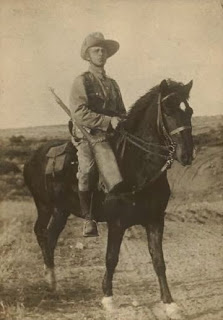I might have stuck with 1904, but along the way my German translation skills have started to improve and I keep finding more primary sources that have bearing on this period as well as the war with the Nama that began as the Hereros were driven into the Omaheke and continued in various stages into 1908. Having finished researching a little known skirmish near Uitkomst in the Grootfontein District and developed a game scenario based on what I discovered, I find I have a taste for more, but Roy and Eric have already covered most of the fights from the Herero War that have tabletop potential.
Roy has long had in mind a second volume in his Kaiser Over Africa series dealing with the Nama
 War of 1904-1908, and I look forward to its development. For my part, I may from time to time turn my researcher's eye toward the arid mountains and dunes south of Windhoek where Hendrick Witbooi, Simon Koper, Cornelius Fredericks and Jakob Morenga made life very difficult for the Schutztruppen who were sent to oppose them.
War of 1904-1908, and I look forward to its development. For my part, I may from time to time turn my researcher's eye toward the arid mountains and dunes south of Windhoek where Hendrick Witbooi, Simon Koper, Cornelius Fredericks and Jakob Morenga made life very difficult for the Schutztruppen who were sent to oppose them. Some of the Germans who served in the South were also involved in the Herero conflict (Estorff, Volkmann and Deimling, among others), while some 250 Hereros fought alongside the Nama at Groß-Nabas in January of 1905: months after their defeat in the North. This is also the conflict where camels come into use by the Schutztruppe both as draft animals and (in the final campaign) as cavalry mounts, and pack mules were used to transport mountain guns.
To acknowledge this expanded focus, the subtitle of this blog has been updated accordingly.













